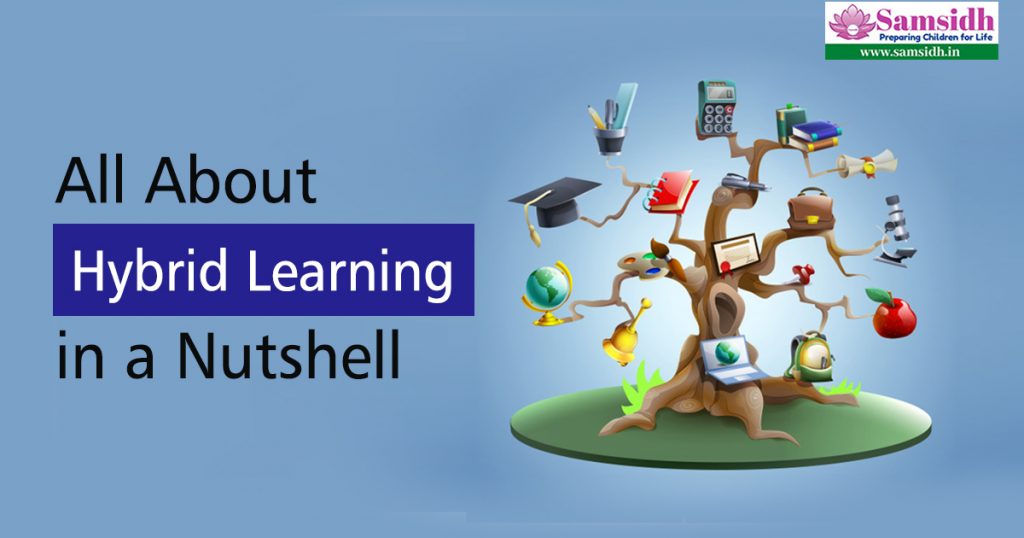Today, online learning has taken precedence but it has failed to be the most effective approach to learning in many ways. A blended learning environment complemented in-person class with additional resources like online materials.
Among such learning models, Hybrid Learning comes to the fore as focussed on bridging the gap between the physical classroom and virtual learning spaces. It is a step towards a more complete education model.
What is Hybrid Learning?
Hybrid Learning is an evolving field that makes teaching and learning more flexible with the use of education technology where both machine learning and artificial intelligence (AI) is involved. It combines traditional classroom experiences with additional offline or distance learning techniques, such as experiential learning and digital course delivery.
The objective is to effectively teach the content and meet the learning needs of students. Additional learning techniques are designed to enhance and reduce traditional in-person instruction. For instance, a class meeting for two days per week allows the instructor using hybrid learning to schedule one day for in-class lecture and the second day for a hands-on lab experience.
By synchronizing the learnings that happen both physically and remotely, it creates a learner-centered experience that is personalized, relevant and engaging. It has a distinct methodology that focuses on both in-person and online learning, often with no preference for one or the other.
How Hybrid Learning Is Different From Blended Learning
Blended learning has introduced computer labs, interactive whiteboards, and educational software to the learning process encouraging the recent practice of online self-study to supplement in-class lessons.
Blended learning is meant to enhance in-person classes and create an enriched distance learning experience. On the other hand, hybrid learning focuses on incorporating any possible learning technique best for the content, whether online or offline. It is meant to create a flexible learning experience. It includes all the points of blended learning but is not limited to just that.
Hybrid Learning — An Integration of Technology and Academics
Efficient online learning needs more than just an online meeting room. Today’s most versatile and effective course designs tend to fall into the hybrid learning style. The hybrid learning model has gained exponential momentum and is finding favor with both teachers and students.
An integration of information technology with education accelerates classroom commitments. It covers core concepts and reinforces reading outside of the classroom in a self-paced manner.
The use of AI can assist with class planning, student profiling, learning curve predictions, designing courses and remedial measures for each student. It expands the toolbox of instructional practices enhancing the experiential learning of students.
The application of instructional technology with traditional academic experience shows a way to deepen student learning.
The Major Benefits of Hybrid Learning
In a hybrid learning model, some learning takes place in person and some take place remotely. The benefits work out as:
- The hybrid model serves a logistical purpose of safety by limiting the number of individuals in a physical classroom. Students in the classroom and the students at home learn the same lesson at the same time.
- The flexibility of delivery. Students can get productive hands-on experience where warranted, and remote interaction to help with basic questions
- Hybrid learning is tuned to specific learning objectives. Therefore, it isn’t only about balancing face-to-face and online aspects within a course, hybrid learning varies widely depending on the subject and the needs of students.
Final Thoughts
In-person teaching limitations mean that certain processes and procedures must be established to let learning reach its full potential. Hybrid learning allows teachers to use their expertise and assessment tools to diagnose learner needs and then craft targeted instruction. It is transformational. It makes learning a set of dynamic experiences for students and learners. With the digital integration in education and ongoing online classes, hybrid learning is becoming a natural part of our education processes — a trend that’s perhaps here to stay even beyond the pandemic.


